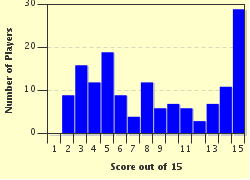Quiz Answer Key and Fun Facts
1. The new Soviet manned spacecraft which succeeded Vostok and Voskhod was dubbed 'Soyuz' which means ___________ .
2. All Soyuz launches have taken place from the central Asian launch complex located at ________ .
3. What is the official designation of the launch vehicle for Soyuz?
4. After a series of precursor missions conducted under the Cosmos label, when was the first manned Soyuz mission launched?
5. The Soyuz consists of three main modules. In which of these does the crew return?
6. What is the approximate weight of a Soyuz spacecraft at launch?
7. A modified Soyuz was to be the basis for planned Soviet moon expeditions in the 1960s. The unmanned precursor missions flew under the __________ designation.
8. Power for the original Soyuz was provided by solar panels.
9. Following the tragic end of the Soyuz 11 mission in June 1971 all subsequent crews were required to wear spacesuits for launch and recovery during a mission.
10. During its operational life there have been many narrow escapes for Soyuz crews. In October 1976 Soyuz 23 was involved in one of these. What happened?
11. On 5th April 1975 cosmonauts Vasili Lazarev and Oleg Makarov on Soyuz 18-1 were involved in an incident which could have had international repercussions. What happened?
12. In September 1983 cosmonauts Vladimir Titov and Gennedi Strekalov in Soyuz T-10-1 became the first crew ever to experience what?
13. An unmanned cargo version called ______ has been developed to service a series of space stations.
14. During the period of detente in the 1970s the Apollo-Soyuz Test Project (ASTP) was staged to symbolise Soviet American co-operation in space. What year did this take place?
15. The Soyuz spacecraft has soldiered on into the 21st century when it was used to ferry crews to the International Space Station (ISS) and acts as an emergency escape vehicle for resident station crews. For this mission it flies under the guise of _________ .
Source: Author
mstanaway
This quiz was reviewed by FunTrivia editor
gtho4 before going online.
Any errors found in FunTrivia content are routinely corrected through our feedback system.

